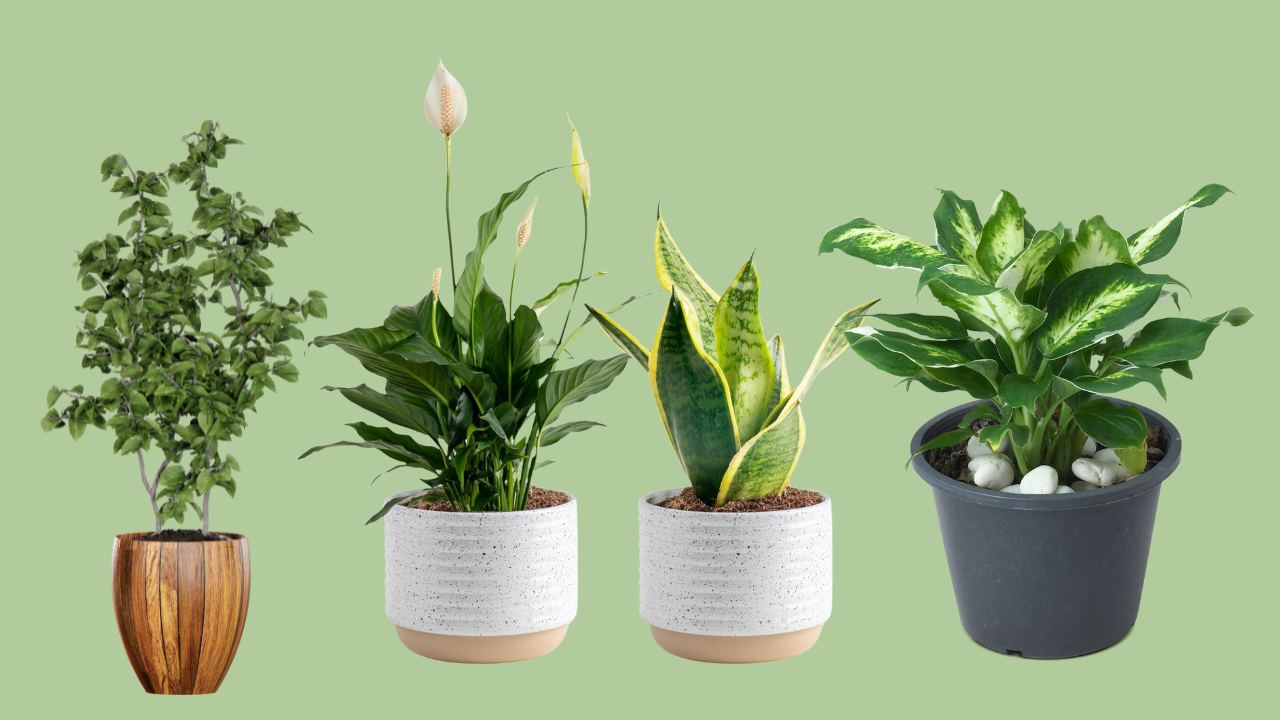25 Stunning Indoor Cactus Types That Are Almost Impossible to Kill

Indoor cactus plants are popular for their low maintenance, unique shapes, and ability to thrive in dry indoor conditions. While many cacti grow outdoors in arid regions, several types adapt well to indoor environments when given the right care — especially bright light, minimal watering, and well-draining soil.
Here are some of the best types of cactus plants for indoor growing :
🌵 1. Christmas Cactus (Schlumbergera spp.)
Features : Segmented stems, blooms around the holidays (hence the name).
Flower colors : Pink, red, white, or purple.
Care tip : Prefers more frequent watering than desert cacti and indirect light.
🌵 2. Easter Cactus (Hatiora gaertneri or Rhipsalidopsis)
Features : Similar to Christmas cactus but blooms around Easter.
Flowers : Star-shaped, usually pink or red.
Care tip : Likes humidity and partial shade; avoid overwatering.
🌵 3. Barrel Cactus (Ferocactus or Echinocactus spp.)
Features : Round, ribbed body with spines.
Growth : Slow-growing; ideal for small spaces.
Care tip : Needs bright sunlight and very little water.
🌵 4. Old Lady Cactus (Mammillaria hahniana)
Features : White fuzzy covering and spines; looks like it's wearing hair.
Flowers : Small pink rings around the top in spring.
Care tip : Full sun, infrequent watering.
🌵 5. Bunny Ear Cactus (Opuntia microdasys)
Features : Flat, oval pads that resemble bunny ears.
Spines : Soft golden glochids (tiny bristles).
Care tip : Bright light; avoid overwatering. Handle with care due to irritating spines.
🌵 6. Pincushion Cactus (Mammillaria spp.)
Features : Small, round or cylindrical shape with clusters of spines.
Flowers : Ring of small pink or white flowers at the top.
Care tip : Easy to grow indoors with plenty of sunlight.
🌵 7. Moon Cactus (Gymnocalycium mihanovichii)
Features : Bright red, orange, or yellow top grafted onto a green base.
Note : Cannot survive on its own due to lack of chlorophyll; must be grafted.
Care tip : Low light tolerance, moderate watering.
🌵 8. African Milk Tree (Euphorbia trigona)
Note : Not a true cactus but often grouped with them.
Features : Triangular stems with leaf-like structures.
Care tip : Tolerates lower light; avoid overwatering.
🌵 9. Ladyfinger Cactus (Mammillaria elongata)
Features : Slender, finger-like stems in clusters.
Color : Green with golden spines.
Care tip : Full sun, minimal water.
🌵 10. Saguaro Cactus (Carnegiea gigantea)
Note : Grows extremely slowly indoors and rarely flowers.
Features : Iconic tall, columnar shape.
Care tip : Needs large pot, lots of light, and careful watering.
11. Star Cactus (Astrophytum asterias)
Appearance : Disc-shaped, spineless with white flecks.
Flowers : Yellow with red centers.
Care tip : Needs bright light and very little water; sensitive to overwatering.
12. Echinopsis (formerly Trichocereus) – "Moonflower Cactus"
Features : Tall, columnar stems.
Flowers : Large, fragrant white flowers that bloom at night.
Care tip : Likes full sun and moderate watering during growing season.
13. Gymnocalycium – "Chin Cactus"
Varieties : Gymnocalycium mihanovichii (moon cactus), G. baldianum (Ruby Ball).
Features : Round body, often colorful due to grafting.
Care tip : Easy for beginners; avoid cold and soggy soil.
14. Rebutia (Crown Cactus)
Features : Small, globular cacti that form clusters.
Flowers : Bright orange, red, or pink blooms from the base.
Care tip : Full sun, good drainage, and regular watering in spring/summer.
15. Ferocactus – "Barrel Cactus" (Various species)
Examples : Ferocactus wislizeni, F. gracilis.
Features : Ribbed, barrel-shaped with strong spines.
Care tip : Full sun and dry conditions preferred; minimal water.
16. Mammillaria elongata – "Ladyfinger Cactus"
Features : Thin, finger-like stems grow in dense clusters.
Color : Green with golden spines.
Care tip : Tolerates a bit of shade but thrives in bright light.
17. Opuntia microdasys – "Bunny Ears Cactus"
Features : Pads look like bunny ears, no large spines but has tiny bristles (glochids).
Flowers : Yellow or reddish in summer.
Care tip : Bright light, infrequent watering.
18. Aporocactus flagelliformis – "Rat Tail Cactus"
Features : Long, trailing stems covered in small spines.
Flowers : Bright pink or red tubular flowers.
Care tip : Great for hanging baskets; needs good drainage and bright light.
19. Parodia (Ball Cactus)
Features : Spherical shape, yellow or red flowers on top.
Growth : Slow-growing and compact.
Care tip : Prefers warmth and bright light; easy to grow indoors.
20. Echinocactus grusonii – "Golden Barrel Cactus"
Features : Golden-yellow spines, barrel-shaped.
Growth : Very slow-growing.
Care tip : Needs full sun and excellent drainage.
21. Espostoa (Peruvian Old Man Cactus)
Features : White fuzzy covering like hair, columnar growth.
Flowers : Small, white or pinkish at night.
Care tip : Likes humidity and indirect bright light.
22. Stenocactus (Brain Cactus)
Features : Wavy ridges resembling a brain.
Flowers : White or pale pink near the apex.
Care tip : Moderate water, lots of light.
23. Lophocereus schottii – "Senita Cactus"
Features : Slender, upright with fine hairs.
Note : Often mistaken for a “blue candle” plant.
Care tip : Prefers bright light and dry soil.
24. Cleistocactus winteri – "Old Man of the Andes"
Features : Clumping, tall, and covered in white wooly hairs.
Flowers : Red-orange tubular blooms.
Care tip : Bright light and moderate watering.
25. Friedrich Wiehler Cactus (Neowerdermannia vorwerkii)
Features : Small, round cactus with short spines.
Flowers : White or yellow.
Care tip : Needs cool winter rest period; not for beginners.
📝 Tips Recap:
Soil : Always use cactus potting mix or make your own (potting soil + sand/perlite/pumice).
Pots : Choose terracotta or clay pots for better drainage and airflow.
Watering : Let soil go completely dry between waterings.
Light : South or west-facing windows are best; rotate regularly for even growth.
Winter Care : Most cacti go dormant — reduce watering and keep temperatures above 50°F (10°C).
Note: IndiBlogHub features both user-submitted and editorial content. We do not verify third-party contributions. Read our Disclaimer and Privacy Policyfor details.







